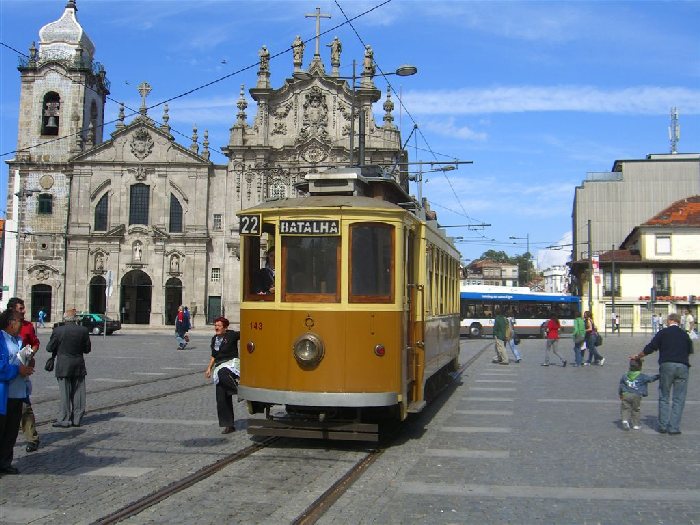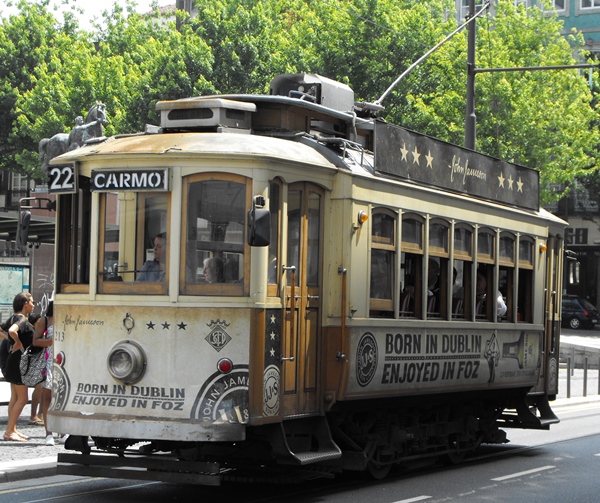
|
In September 2007, after a gap of 30 years, trams returned to Oporto city centre as the newly contrived route 22. This development was possible after the local council had re-laid and re-opened the line from Carmo to Praça (da Liberdade) in the heart of the city and, from there, up the hill to Batalha to a terminal stub adjacent to the restored Guindais funicular.
However, despite having to reverse at Batalha/Guindais, the new route 22 effectively operates as a circular, linking Carmo to Batalha every 30 minutes. The route passes from Batalha via Santa Catarina, Passos Manuel, Pç D. João I, across the Avenida dos Aliados to D. Filipa de Lencastre, then the Ruas Ceuta, José Falcão, Guilherme Gomes Fernandes and Gomes Teixeira squares, Cordoaria, Clérigos and Rua 31 de Janeiro. Almost 5,000 passengers used the new tram route no.22 in its first week of operation, which was from 23 to 29 September 2007.
At Carmo the 22 intersects with the 18 route, which in turn links to route 1E at Massarelos, so it is possible to use all three routes very easily.
Left: In a photo kindly provided by Tim Fenton in October 2005, the service 22 (tram 143) is seen in front of the Carmo monastery in central Oporto. Behind it is the other extreme of Oporto's transport, a gas-powered bus.
Between September 2009 and June 2011, a City Tour tramline, "T", also operated, running from Infante via Massarelos, Cordoaria, Batalha, Carmo, Massarelos and back to Infante. It was withdrawn due to poor patronage, a consequence of its relatively high fare.
|




